Harper Green explains the philosophy behind the intermingling energies that emanate from the creative enterprise, "It is not often people think about where the energy for a fledgling festival comes from."
Using the Woodford Folk Festival as an example, he noted that the land (now known as Woodfordia) was purchased in July 1994 for the purpose of securing a permanent home for what was then the Maleny Folk Festival. The festival kicked off and kept growing at a spectacular rate. From Dec 27 to January 1, every year, creativity flourishes.
More than 2,000 local, national and international artists, musicians and presenters put on over 500 acts to an audience of an estimated 132,000 people. Before the translocation to Woodford, the site was a barren dairy farm. Imagine! The area now has at least 120,000 subtropical rainforest trees, orchids, ferns and sedges planted to create a habitat for butterflies and wildlife. The site has been transformed into a village that hosts over 25,000 daily patrons, performers, stallholders, volunteers, and organisers. As many as 2,680 volunteers across 162 departments are at the heart of the organisation and contribute to the setup and day-to-day running of the festival. (About Woodford Folk Festival).


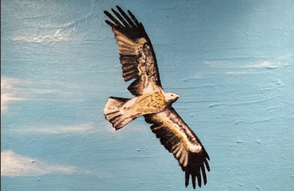
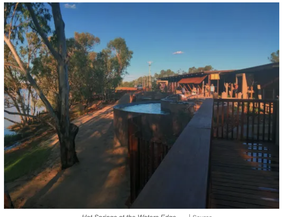 Could a transformation like the one that happened at Woodfordia happen for Cunnamulla? The simple answer to this question just might be: “Why ever not!”
Could a transformation like the one that happened at Woodfordia happen for Cunnamulla? The simple answer to this question just might be: “Why ever not!”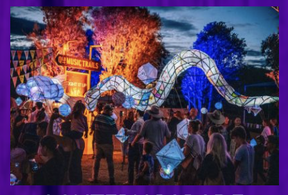 .
.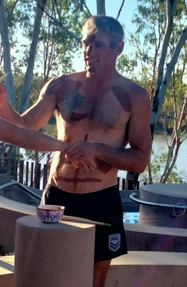 entirely different water.
entirely different water.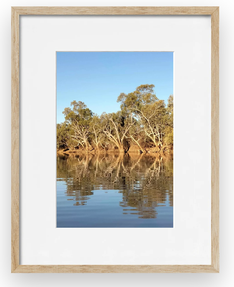 The Warrego, on the other hand, is a steadily moving river flowing down through the eastern side of Australia It is a major northern tributary of the Darling River that begins in the Carnarvon Ranges on the Great Dividing Range in Queensland and flows south for around 800 kilometres, where it joins the Darling River upstream of Louth.
The Warrego, on the other hand, is a steadily moving river flowing down through the eastern side of Australia It is a major northern tributary of the Darling River that begins in the Carnarvon Ranges on the Great Dividing Range in Queensland and flows south for around 800 kilometres, where it joins the Darling River upstream of Louth.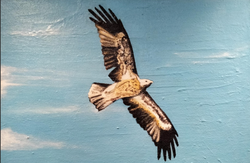

 As We Age - We React to Life's Challenges Differentlyon 03/16/2024
As We Age - We React to Life's Challenges Differentlyon 03/16/2024
 Organic Gardening - Cunnamulla Styleon 03/08/2024
Organic Gardening - Cunnamulla Styleon 03/08/2024
 Cunnamulla - Premium Destination Outbackon 12/17/2023
Cunnamulla - Premium Destination Outbackon 12/17/2023
 OpenAI and Watermarkson 02/06/2024
OpenAI and Watermarkson 02/06/2024
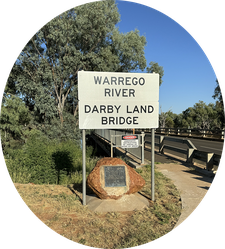
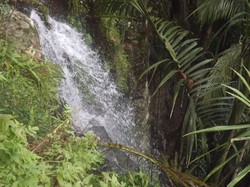
Comments
He had a flighty mind. I must admit that I am very switched on to new plants I see that are native to this district. Besides that, I am so used to everything that I don't think about names much. Unless I want to buy it or fix it.
Colors and shapes and sizes perhaps "root" more easily than names with artists.
For example, Vincent van Gogh produced many paintings of trees whose colors, shapes and sizes always move me in their compelling accuracy and aesthetics.
But was he as aware of each name as he was of each arboreal aura and configuration? Perhaps yes, perhaps not!
I'll find out and get back to you. I take it all in as though it were a painting. Names escape me - but - I should take more notice, shouldn't I?
Thank you for the link!
It's interesting that 130+ companion-planting species inhabit mulga shrublands and woodlands.
Mulga yellow flowers must be so beautiful with the latter's blue-, pink-, purple-, white-, yellow-flowering understory. The link notes as perhaps rare-nestlng ground-heads (Chthonocephalus pseudevax) and perhaps less rare-niched wires-and-wool (Angianthus burkittii).
Would you find the above-mentioned duo in your area?
I think you will find these are Mulga. The trees are extremely well drought-proofed both top and bottom, with very long tap roots as well as extensive shallow roots, and long, thin, leathery, silver grey phyllodes (thickened leaf stems) instead of leaves, to reflect heat and minimise evaporation. https://www.bushheritage.org.au/blog/...
I think this what they are.
Last week I digitally attended an Urban Forestry Today webinar, about tough trees, hosted by University of Massachusetts-Amherst and presented by University of Iowa-Ames.
So your in-text image, under the subheading The Warrego River A relaxing context for fishing, paddle board and kayaking, got my attention as a tough-trees site with tough trees.
What is the tree species leaning so photogenically at water's edge?
I don't think there is one! It is just the name for a crossing at Kent's Lagoon.
Your comment, three boxes down, paralleled Bonnie Knob and Kent's Crossing as local names.
Online sources provide no biogeographical context for Kent's Crossing.
What would be the non-local -- ;-D -- name for Kent's Crossing?
Yes. It might mean attractive mountain = believe me- it is attractive.
The English name Bonnie Knob does not look to me like a literal equivalent of the indigenous word mia-mia.
Online sources give "attractive, beautiful" and "baby, beloved" as defining bonnie and "a prominent round hill" as defining knob.
Is that a possible meaning of Bonnie Knob in Australia
Online sources link bonnie to northern English and to Scottish vocabularies.